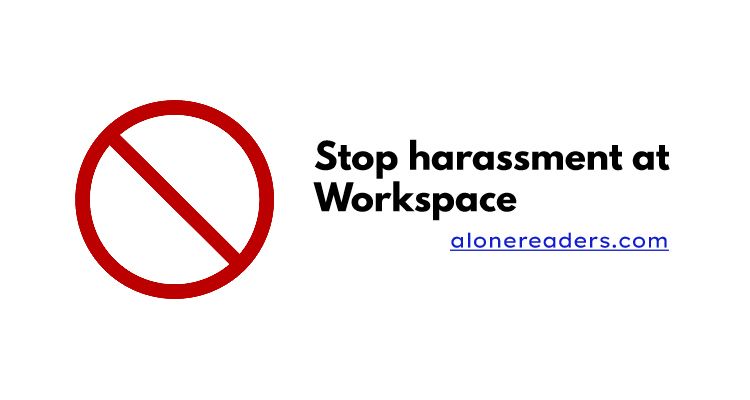
Workplace harassment is frequent, yet it is rarely discussed openly in most workplaces. Workplace harassment creates a toxic and destructive environment. Because many people are unsure what constitutes workplace harassment, the majority of incidents go unnoticed and unreported. This article will largely discuss workplace harassment, its various forms, and how to report it.
We've all witnessed toxic work conditions, which lead to many individuals quitting their jobs. Have we ever pondered why? Why do some employees appear in random incidents? Is it possible that they are being harassed in some way?
Any organization's resources, specifically its people, are critical to its success. A distracting and unpleasant work environment can harm your company's productivity, employee relations, and reputation in the marketplace. As a result, maintaining etiquette and having zero tolerance for harassment are essential for any company's success.
When an individual or group of employees feels threatened or dismissed by their coworkers, this is known as workplace harassment. A workplace harasser's main goal is to make their victims feel unsafe and uncomfortable.
"Workplace bullying," "mobbing," "workplace hostility," and other terms are used to describe workplace harassment.
Harassment includes numerous forms of segregation and acts of infringement that are not limited to a single group. Harassment happens when people target several groups, such as women, ethnic and sexual minorities, disabled people, and immigrants. Workplace harassment, in essence, necessitates a pluralistic setup because it cannot be defined in a single coherent and solid manner.
Workplace harassment may or may not be supported by tangible evidence, but it cannot be denied. Harassment is defined as inappropriate jokes, bullying, slurs, epithets, physical attacks, intimidation, mockery, insults, offensive objects or photos, and interference with work performance, according to the Equal Employment Opportunity Commission (EEOC).
Harassment at work can take many forms, including verbal and physical harassment, sexual favors, psychological and emotional abuse, and so on. There are five different types of workplace harassment:
Verbal Harassment
Victims of verbal harassment may find themselves in a never-ending battle for their health and careers. Derogatory remarks, unpleasant gestures, and unjustified comments are all examples of verbal harassment.
Because this is a non-physical type of violence, it commonly includes insults such as fat-shaming/body-shaming jokes, cruel comments, and unwelcome taunting. Because it is a gray area, HR managers and leaders must be on the lookout for harassment.
Psychological Harassment
Psychological harassment is comparable to verbal harassment in that it is more subtle and involves methods such as withholding information. Victims of this type of harassment are more prone to have mental breakdowns, have low self-esteem, and be self-destructive.
Taking credit for others' accomplishments, making unattainable demands, setting impossible deadlines on an employee, forcing someone to perform outside their job area, and so on are examples of psychological harassment. This is a type of psychological bullying that is done on purpose.
Cyberbullying
The newest kind of harassment is digital harassment, often known as cyberbullying. Even if it occurs online, cyberbullying is just as harmful as physical bullying.
Sheri Mooney, president and CEO of Mind Squad HR, stated:
"Digital harassment includes posting threats or demeaning comments on social media, creating a fake persona to bully someone online, creating a webpage about the victim to mock and belittle them, and making false allegations online."
In any job, social media usage has become the norm. As a result, anyone can harass anyone online in the name of free expression. People can create fictitious personas to mock or abuse their coworkers.
However, there is some good news about cyberbullying: victims may document it. Bullying and prejudice can be documented by screenshots, archived e-mails, and other methods.
Victims of workplace harassment can readily report such harassment this way.
Sexual Harassment
Workplace sexual harassment is a horrible crime that is more widespread than you might believe. It is a crime that does not simply affect women. Sexual harassment can be perpetrated or perpetrated by anyone of any gender.
According to a ZipRecruiter survey, 40% of female respondents and 14% of male respondents have experienced workplace sexual harassment.
Sexual harassment includes unwanted touching, sending obscene texts and films, asking for sexual favors, and making statements that include vulgar gestures.
Because most of these occurrences go unobserved and unreported, criminals frequently get away with their actions. Many victims do not want to talk about it because they believe it will improve, but it simply gets worse. However, if a sex offender makes someone uncomfortable, they must be reported.
Physical Harassment
Workplace physical harassment can take various forms. Harassment might take the form of inappropriate attire or skin contact, physical attacks, threats, or damage to personal property.
People from gender minorities and LGBTQIA+ populations are more likely to experience workplace harassment. Some harassments can be downplayed as jokes by offenders who do not intend to cause physical harm; in such circumstances, identifying physical harassments becomes difficult.
Physical harassment can be regarded even if there is no serious physical harm. Employees must make a report and take strong measures against offenders if a situation develops violent.
Every company has a human resource department, which is designed to assist employees in crisis situations. Good HR practices safeguard their safety and job security, whether they feel uncomfortable or in danger, or are threatened by a coworker.
The lack of physical evidence in most grievances or harassing actions should not stop a victim from submitting a formal report.
According to Mooney, reporting workplace harassment is vital since other victims may have complained about similar acts committed by the same offender.
While many larger firms have rigorous anti-harassment rules, some smaller organizations may not. Employees, especially leaders and HR managers, are encouraged to adopt the following steps: